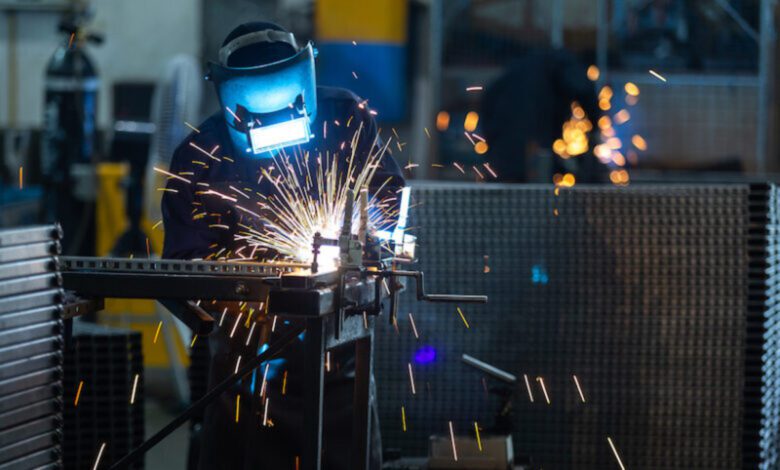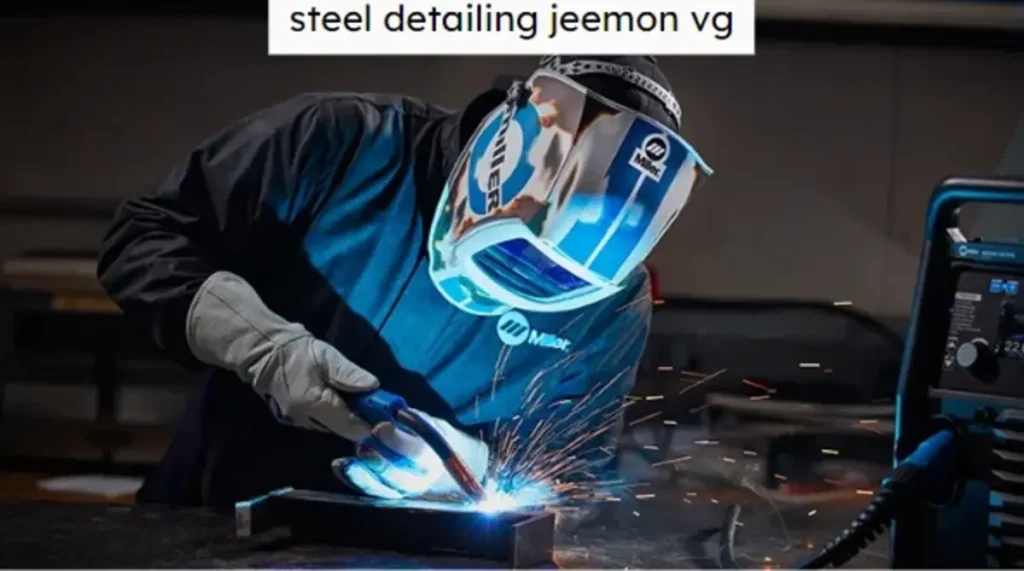
Introduction to Steel Detailing
Steel detailing may be a challenging aspect of construction projects, but it is vital in ensuring their success. From skyscrapers and bridges to stadiums and industrial structures, steel detailing is the backbone that brings these impressive feats of engineering to life. And one name that stands out in this field is Jeemon VG.
In this blog post, we will explore the importance of steel detailing in construction projects and how Jeemon VG’s expertise has significantly impacted this industry. So, buckle up as we delve into the world where precision meets innovation and discover why steel detailing deserves its place in the spotlight! Get ready to witness the magic unfold as we uncover what makes Jeemon VG an exceptional figure in this realm.
So let’s dive right into it – What exactly is steel detailing, and why is it so crucial? Let’s find out!
Why is Steel Detailing Important in Construction Projects?
Steel detailing plays a crucial role in construction projects, ensuring the accuracy and efficiency of the entire structural design process. Providing detailed plans and drawings for steel fabricators and erectors helps streamline the construction workflow and minimise errors at every stage.
One key reason why steel detailing is essential is that it allows for precise fabrication and erection of steel structures. The detailed plans provide information about dimensions, connections, and other specifications that ensure all components fit together seamlessly. This not only saves time on-site but also reduces waste by minimising rework.
Moreover, steel detailing helps identify any potential clashes or conflicts between different structure elements early on in the project. This proactive approach allows for necessary adjustments before construction begins, avoiding costly delays or modifications during later stages.
Another benefit of steel detailing is improved communication among project stakeholders. The detailed drawings act as a common language between architects, engineers, fabricators, erectors, and contractors – making understanding each other’s requirements and expectations easier.
Furthermore, accurate steel detailing ensures compliance with building codes and regulations. It ensures that all structural elements meet safety standards while optimising material usage – helping reduce costs without compromising quality or integrity.
Steel detailing is essential in construction projects because it guarantees precision in fabrication and erection processes while improving stakeholder communication. It identifies potential clashes early on while ensuring compliance with building codes – ultimately leading to smoother workflows with reduced errors or rework throughout the project lifecycle.
The Role of a Steel Detailer
A steel detailer plays a crucial role in construction projects, working behind the scenes to ensure that every piece of steel is accurately designed and fabricated. Their job involves creating detailed drawings and models that provide the necessary information for manufacturing and installing structural steel components.
One of the primary responsibilities of a steel detailer is to interpret architectural and engineering plans, translating them into precise shop drawings that show how each piece fits together. They meticulously calculate dimensions, connections, and specifications, ensuring everything aligns with industry standards and building codes.
Accuracy is critical in this role, as even minor errors can significantly affect the overall project. A skilled detailer must possess strong attention to detail, spatial reasoning abilities, and technical knowledge about materials and construction processes.
Collaboration is also an essential aspect of a steel detailer’s role. They work closely with architects, engineers, fabricators, contractors, and other stakeholders to address any design or coordination challenges that may arise during the process.
With advancements in technology, such as 3D modelling software and Building Information Modeling (BIM), today’s steel detailers can create more accurate representations of structures before they are built. This improves efficiency and reduces costs by identifying potential clashes or issues early on.
The role of a steel detailer requires a unique blend of technical expertise and creativity. By providing detailed plans that guide fabrication teams on-site, they contribute significantly to the successful execution of construction projects while maintaining safety standards.
Common Challenges and Solutions in Steel Detailing
Steel detailing is a crucial process in construction projects but comes with its fair share of challenges. One of steel detailers’ most common challenges is dealing with complex and intricate designs. These designs often require precise measurements and calculations to ensure that every piece fits perfectly into place.
Another challenge is managing changes or revisions during the detailing process. As new information becomes available or design modifications are made, updating the steel plans accordingly can be difficult without compromising accuracy or causing delays.
Additionally, coordinating with other trades can pose a challenge. Steel detailers must communicate effectively with architects, engineers, fabricators, and contractors to ensure everyone is on the same page and working towards a common goal.
To overcome these challenges, experienced steel detailers employ various solutions. They utilise advanced software programs that allow for accurate 3D modelling and visualisation of structures. This helps them identify any potential clashes or issues before fabrication begins.
Furthermore, collaboration tools such as Building Information Modeling (BIM) facilitate seamless communication between stakeholders involved in the project. BIM allows for real-time updates and coordination among all parties throughout construction.
Moreover, implementing quality control measures at each stage of steel detailing ensures accuracy and minimises errors. Regular checks are conducted to verify dimensions, connections, material specifications, and adherence to industry standards.
Despite the challenges faced in steel detailing projects today, innovative technologies and meticulous planning have revolutionised this field. With continued advancements in software capabilities and improved collaboration methods like BIM becoming more prevalent within the industry, these solutions will undoubtedly contribute to overcoming future obstacles seamlessly while enhancing efficiency in construction projects globally.
Advancements in Steel Detailing Technology
In the construction world, technology is constantly evolving, and steel detailing is no exception. Over the years, significant advancements in steel detailing technology have revolutionised the way projects are planned and executed.
One of the most notable advancements is the introduction of 3D modelling software. This powerful tool allows steel detailers to create highly detailed and accurate models of structures, making it easier to visualise how different components fit together. 3D modelling identifies potential issues or conflicts early on, saving time and money during construction.
Additionally, collaborative platforms and cloud-based systems have made communication between designers, engineers, fabricators, and contractors more streamlined than ever before. These technologies allow for real-time sharing of information and updates, ensuring everyone involved in a project has access to the latest data.
Another exciting advancement is the integration of Building Information Modeling (BIM) into steel detailing processes. BIM enables all stakeholders to work collaboratively within a single digital model containing comprehensive information about every building’s design and construction aspect.
Furthermore, automation plays a crucial role in modern steel detailing techniques. With minimal human intervention, software programs can now automatically generate fabrication drawings from 3D models. This speeds up the process and reduces errors associated with manual drafting methods.
Benefits of Implementing Detailed Steel Plans
Regarding construction projects, the importance of implementing detailed steel plans must be balanced. These plans provide a clear roadmap for the entire project, ensuring every step is executed precisely and accurately.
One of the key benefits of implementing detailed steel plans is increased efficiency. Construction teams can streamline their processes and minimise errors by having a comprehensive plan in place. This saves time and reduces costs associated with rework or delays.
Another advantage is improved communication among all stakeholders involved in the project. Detailed steel plans serve as a common reference point for architects, engineers, contractors, and fabricators, ensuring everyone is on the same page throughout the construction process.
Additionally, detailed steel plans enable better visualisation of the final structure. With accurate measurements and specifications in advance, project managers can envision how different components will fit together and make any necessary adjustments early on.
Furthermore, these plans enhance safety on-site by identifying potential hazards or conflicts before they arise. Addressing these issues proactively during the planning stage can mitigate risks effectively during construction.
Lastly,
Detailed steel plans contribute to sustainability efforts in construction projects.
By optimising material usage through precise calculations,
waste can be minimised significantly,
reducing environmental impact while maximising resource utilisation.
implementing detailed steel plans offers numerous benefits for construction projects.
From increased efficiency to improved communication,
better visualisation to enhanced safety,
and even contributing toward sustainability goals.
Investing time and resources into detailed steel plans is crucial for successful project execution.

Case Studies: Successful Implementation of Steel Detailing by Jeemon VG’s Company
Jeemon VG’s company has been at the forefront of implementing steel detailing in construction projects, and its success stories are a testament to the importance of this practice. Let’s delve into some case studies highlighting how detailed steel plans have significantly impacted.
One notable project involved the construction of a high-rise building in a bustling urban area. By utilising precise steel detailing, Jeemon and his team optimised the design and placement of structural elements, resulting in improved safety measures and enhanced structural stability—the accurate dimensions provided by their detailed plans allowed for seamless coordination between trades on-site.
In another instance, Jeemon VG’s company renovated an existing industrial facility. They successfully maximised space utilisation through meticulous steel detailing while ensuring compliance with all relevant codes and regulations. This not only increased operational efficiency but also minimised costly modifications during implementation.
Furthermore, Jeemon VG’s expertise was instrumental in completing a complex bridge construction project. His team carefully crafted detailed plans for various factors such as load-bearing capacities, material specifications, and environmental considerations. The result? A structurally sound bridge that seamlessly integrates with its surroundings.
These case studies demonstrate how attention to detail through steel detailing can lead to remarkable outcomes in construction projects. From improved safety measures to cost savings and efficient resource allocation – it is clear why more companies are embracing this practice under Jeemon VG’s guidance.
Stay tuned for our next blog post to explore emerging technologies revolutionising steel detailing practices!
Conclusion: The Future of Steel Detailing in Construction Projects
As the construction industry continues to evolve and embrace technological advancements, steel detailing remains a crucial aspect of any successful project. With its ability to provide accurate and detailed plans, steel detailing is vital in ensuring structural integrity, cost-efficiency, and timely completion.
Jeemon VG’s company is a testament to the value of implementing detailed steel plans. Through their expertise and innovative approaches, they have successfully executed numerous projects with precision and excellence. Jeemon VG has demonstrated how effective steel detailing can lead to remarkable outcomes, from commercial buildings to industrial structures.
Looking ahead, the future of steel detailing appears promising. Advancements in technology continue to revolutionise this field, making it easier than ever before for detailers to create intricate designs quickly and accurately. BIM (Building Information Modeling) software has further streamlined the process by allowing seamless collaboration between architects, engineers, contractors, and detailers.
Additionally, sustainability is becoming an increasingly important consideration in construction projects. Steel detailing can contribute significantly towards achieving sustainable goals by optimising material usage and reducing waste during fabrication.
Furthermore, as global trends push for more complex architectural designs with unique shapes and forms that challenge traditional building methods – such as curved facades or cantilevered structures – the demand for skilled steel detailers will grow stronger.
In conclusion…
Despite the challenges faced in steel detailing projects today, innovative technologies and meticulous planning have revolutionised this field. With continued advancements in software capabilities and improved collaboration methods like BIM becoming more prevalent within the industry, these solutions will undoubtedly contribute to overcoming future obstacles seamlessly while enhancing efficiency in construction projects globally.







